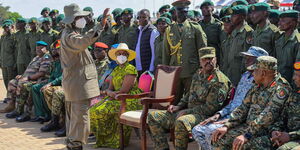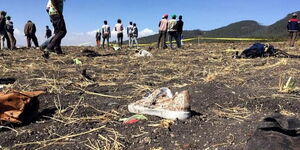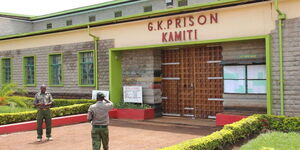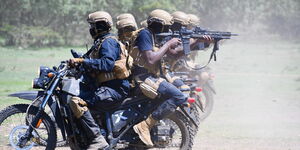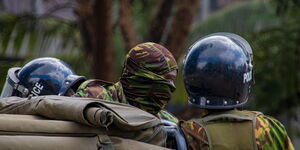Victims of human-wildlife conflicts and their families should report the cases as soon as they happen to enable the government to process compensation claims quickly, the Kenya Wildlife Service (KWS) has said.
"There is a need for quick reporting of cases of wildlife attacks, and proper documentation to facilitate effective processing of compensation," KWS Director General Erustus Kanga said in a statement.
Kanga added, "The cases can be reported at KWS offices or at the State Department of Wildlife, which manages the compensation process and allocates funds based on verified claims from victims of wildlife attacks or damages."
This came as the government intensified efforts to address the rising incidents of wildlife-related deaths, injuries and loss of property.
"Therefore, victims of human-wildlife conflict (HWC) are encouraged to reach out the the State Department of Wildlife to follow up on their compensation claims and receive the support that is available under the ongoing national program," Kanga said in a statement.
During a public engagement forum at Isara, Kajiado County, the Wildlife Department announced it has disbursed a total of KShs 3.8 billion in compensation to victims of human-wildlife conflict since 2023.
This figure includes KShs 64,126,000 distributed in Kajiado alone on May 12, a region recognised as a hotspot for human-wildlife conflicts.
Kanga said HWC is not just a conservation issue but a national priority, particularly in regions such as Kajiado, Taita Taveta, Narok, Laikipia, Meru, Kwale, Baringo, Kitui, and Isiolo, due to the presence of wildlife habitats.
Most cases of HWC are reported in these regions due to their proximity to critical wildlife corridors.
The KWS has initiated several measures aimed at reducing wildlife-related threats. These include the deployment of response teams, the erection of fences to separate wildlife from human settlements, and the installation of predator deterrent lights.
Additionally, KWS is involved in various community projects such as building water pans, offering bursaries for students, and constructing classrooms and fencing schools to support communities living near wildlife zones.
Prof Kanga called on communities around wildlife habitats and all other stakeholders to work together to create sustainable solutions that will ensure the safety and coexistence of both humans and wildlife.


